|
HITCH-KICK KEY POSITIONS
1: Hold knee drive from board 2: Extend foreleg away from knee 3: Pull free leg down straight and fast below and behind hips. Same side arm and leg should be in alignment 4: Move into landing position (legs should rotate quickly in advance of the hips) WHY NOT CONSIDER BECOMING A MEMBER ON MY YOUBE CHANNEL AND GAINING ACCESS TO EXCLUSIVE VIDEOS SUCH AS HOW TO COACH THE HITCH-KICK? At the time of writing this is the latest video of 33 Members' only videos. This one takes you through a hitch-kick learning training session I did with one of my visiting athletes. You'll see the steps which I went through with the athlete and the drills we used to get him learning the hitch (from a poorly executed hang). You'll also hear him in real time listening and responding to my feedback. The aim is that this will aid you in learning how to really practically teach the hitch-kick.
0 Comments
IN THIS VIDEO ON MY YOUTUBE CHANNEL I TAKE A LOOK AT: How to improve vertical long jump take-off velocity i.e. get more height This is a follow up video from the previous one on long jump horizontal velocity (LONG JUMP ESSENTIALS #1 TAKE-OFF SPEED. HORIZONTAL VELOCITY & WHY YOU ALWAYS SLOW DOWN https://youtu.be/hQVJtv8r6Aw VIDEO TIMELINE 0.36sec Statistics are presented from World Athletics and in particular the 2017 World outdoor champs LJ final won by Luvo Manyonga with Jarrion Lawson in second (8.48m/8.44m). I go through the jumpers' vertical and horizontal take-off velocities. Manyonga achieves greater vertical velocity and this could be the reason for his winning leap. Lawson is faster horizontally - again see horizontal velocity video. 1.42min: Jump distance is a product of horizontal and vertical take-off velocity 1.57min: Other factors which influence vertical velocity from a biomechanics point of view The degree and speed of knee flexion at take-off Take-off angle is another factor (more in another video to come) 3.00min: What can you do to improve your take-off hight? Eccentric overload drills Mat placed on penultimate step will overload the take-off and the forces which need to be braked and returned. This is known as the “coupling” time between the eccentric and the concentric phases. Plyo eccentric emphasis jump drills 3.30min Eccentric overload drill I include this drill across the whole of the training year 3.59min: Eccentric emphasis plyos - for example, drop and block jumps (with or without added weight) and downhill step jumps. I provide an example of research which shows how downhill step jumps can improve vertical jumping ability and the torque in the knee extensors 4.32min More on drop and block jumps Note the eccentric take-off work is much more specific 5.10min Summing up 5.54min Consider becoming a channel member 6.13min Freelpap system -We tend to post the positives on social media - the aim is to showcase all that is good. However, it does not always go to plan and that is life…
At the recent British World Champs Trials Leigh fouled out in the long jump. That there were only nine in the field and that she was the only one to leave after three rounds meant the pill was a harder one to swallow. Her jumps - and two were minimal fouls - would have easily made the cut. However, it was not to be. LESSONS TO BE LEARNT I had told Leigh “to be in the moment”, to be in “control” of what she was doing, that she “only” needed 5.90m to make the final, but for whatever reasons it did not happen. Let me try to explain… You take your run-up back but you still foul. I’ve been there, I’ve coached this … tell the athlete to keep it tight to run the same and distribute speed as they always do in training, but a competition and a high-level one is just not the same. Adrenaline, nerves, desire, fear, all kick-in. Mistakes happen after all the athlete is human. As Leigh approached the baord six to seven steps out on her third attempt I knew it would be a foul. She had over-cooked it and was runing faster than the previous two attempts. She was covering more ground, The jump was long and it and a clear foul. A real head in hands moment. But that is the nature of sport. There’s not too much you can say in the aftermath … I try to focus on the positives - in this case the length of the jumps (albeit fouls) and an improvement in technique. (Leigh was getting a better take-off and more hight.) So, it won’t be long before the fouls count. It’ll be a totally different mood. The lessons will be learnt and the learning implemented. Look out for a specific video on this on my YouTube channel soon. This is the accompanying text for one of my exclusive YouTube channel members' videos. There are 30 on the channel and this one specifically deals with the training block post indoor season. This is my Training Block 6. To get access to this and other exclusive Coach-Athlete member videos click here: ------------------------------------------------ Video Timeline and Content 0.00min Introduction I explain the aim of this video – how to use undulating periodisation to prepare for the outdoor season. 0.41sec Recap on my methods of periodisation Undulating periodisation I use a jig-saw piece methodology. This specifically refers to how I construct training blocks and sessions. All the pieces of the long jump puzzle are fitted together to hopefully complete the long jump puzzle. I keep the jumper very close to being able to perform well in the event year round and just dip below what can be called an optimum performance line across the training year. Jig-saw pieces i.e drills and drill units: Mechanics of the run-up- acceleration, acceleration phase, posture, rhythm … long jump take-off - penultimate step, hip swing, take-off drive sprint technique – heel recovery, foot strike, hip power, acceleration work, max velocity work, potentiation etc etc “Try to see drills as a very specific way to condition.” In each block of training I rotate those training jig-saw pieces. In previous videos I have described how the blocks must follow logically from one to the other – to maximise potentiation. I talk about running percentages (of maximum speed) and how keeping these above 80% will make it very easy to elevate speed and not lose it. This block of training tends to work up to about 90/95% speed, for example, on average. I just want to hold the athletes back a little. “It’s all about the synergy between the training blocks”. 3.22min Comment on fast twitch muscle fibre Knowing a little about fast twitch muscle fibre and how it is potentially altered by training can be useful knowledge. My approach hopefully ensures optimal adaptation. I go into a little detail – and indicate how much of the training we do seems to effect type 2a and type 2x fibres and not the most powerful type 2b ones – who’s percentage largely seems to now be seen as genetic. Do take a look at some of the videos on the channel on fast twitch muscle fibre. My thinking has changed in the light of recent research. See video below and HERE 4.58min The Training We are doing in this Block 5.40min Session Content Analysis I go through a couple of sessions in a typical week in this phase. These are the three main group sessions (Monday, Wednesday and Saturday. And I also go through a special session I do using the Lila Exogen wearable resistance kit. Note the content will change week to week. First Main Session Basics Unit 1: In place drills Great for posture, balance, and body awareness Great for the hips – which is a key focus of my training Powerful hip extension and flexion is crucial – without this you are going to be limited in terms of developing sprint speed. Unit 2: Bar drills – which again have similar benefits to the basics. Marching, lunges, skipping, low cycles, high cycles etc. 10-20 reps over 20m; 6-10 variants. (See main channel for more on bar drills.) Bar runs up to about 90% 2x20m; 2x30; 2x40m Unit 3: Plyometrics I vary the content – you’ll see some hurdle jumps and drop jumps. 7.26min Second Main Session Unit 1: Basics – in-place again, plus some eccentric movements e.g. single leg squats, calf lowers (good for Achilles tendons). These are included for pre-conditioning (injury avoidance reasons), “Try to include exercises which will strengthen your athletes.” Unit 2: Leg cycling and piston drill combinations. So, again a further hip emphasis. There will be 5-6 variations, each performed twice over 20m. Unit 3: Then, after a break, 50m build up runs – similar to the bar drill runs in Session I, the aim is to hit the percentage over the final 5m-10m of the efforts (depending on distance). I’m trying to hold the athletes back a little. Unit 4: Next: Jump technique We do two jump sessions a week – each has a different emphasis. Long jumpers – we will do various mat drills which focus on different take-off requirements. We typically use 11-16 steps. We will go toward the longer end as the block progresses. Triple jumpers working on hop technique. I’m less prescriptive with them as I need to focus on each athlete’s specific needs. With the long jumpers, I’ve found that a more generic approach can work i.e "x" jumps using 2 mats (3rd step out and take-off), "x" jumps using 1 (on penultimate step). “You do need to obviously focus your training on the individual needs of your athletes.” Again we are working off a pretty long run-up. We will break the phases down – so could focus on hop to step, or do two bounds and a jump, for example. Unit 5: Final unit could be 8x60m at about 80% as a way to maintain specific fitness. By running 60m the athlete will still run fast – which is quicker than if they attempted to do 5x200m at 80% and of course less metabolically demanding and potentially less disruptive to fast twitch fibre. 10.21min Third Main Session Unit 1: First unit includes basic drills. Unit 2: Then barefoot drills -marching, walking through the take-off, calf drills, low cycles and runs. Make sure the track is safe to exercise without shoes and build up gradually over training blocks and years. “It’s actually hard to run slowly without shoes”. And this means that the foot usually strikes the ground in the right position. Take time slowing down. Strong feet provide great foundations. Unit 3: Next unit – combination drills These are a nod toward increasing speed: Low-high-low-high cycle Low cycle-scissors Low cycle-scissors Low cycle-skips Low cycle-skip Over 50m 2 reps each The transitions speed up the contacts as the drill is progressed – the athletes have to try to keep up with their feet/leg speed. Unit 4: Long run-ups after a break. Here we add an extra two steps to the jumpers’ normal run-up. This is done sometimes to the pit and sometimes (as shown) on the track. The idea is that the jumper will be easily able to maintain the "attack" on their normal length run-ups when they have to. Sometimes we may add a take-off. Unit 5: More jump technique work Long jumpers – again take-off emphasis. Eccentric take-off overload. Triple jump similar to previous session “Use your coach’s eye – your knowledge of your athletes – to give them what they want.” Unit 6: Weights session This is a lighter one - it includes jump squats, jump lunges and some hamstring work. Note: if the athletes are tired from the previous units/training week, we may curtail this session or change the exercises to less dynamic ones. 13min Special Session – micro-loading with Lila Exogen wearable resistance This is very specific – we are targeting the thighs and the calf muscles with the attachable/detachable micro weights (10g-20g) to create different effects. Loading behind the knee will help to enhance stride length and in front of the knee cadence and foot contact. This is very much experimental work as I and the athletes get more up to speed with the potentialities of the Lila equipment. For more on Lila and my very first thoughts please click HERE. As I have said in other videos there seems to be some great potentiality with the kit. The sessions utilise various loading positions. We will do some sprints and build up runs with Lila and then some unloaded efforts (this should also have a potentiating benefit). This session can be intense and therefore I need to ensure that the subsequent sessions are not impaired. We may have to dial back the content of the subsequent one for the athletes who have done the Lila session. Using Lila has seemed to have worked. Whether that is solely attributable to the kit is difficult to specifically say as the other training will have also contributed to improvements. Leigh Leigh seems to have responded particularly well as you will see in the video. She has progressed from 5.80m to 6.24m and her sprint form has improved significantly. 15.25min Summing up Hopefully the information in the video will help you better understand undulating methodologies and how to plan training immediately post indoors. Any questions please let me know and thanks for your support. In this video from my YouTube channel I take a look at some of the reasons why sprinters find it difficult to long jump.
You'd think that with good speed (potentially the key requirement of long jumping) that they would naturally make great jumpers. However, when you look into it the number of elite combined sprinters and jumpers is minimal. Only Carl Lewis really was consistently successful at the 100m, 200m and long jump. In my analysis I also reverse the argument and consider why long jumpers don't feature in the sprints also at elite level. The following reasons are covered. Lack of training time Different energy systems used Different training emphases - sprint start and acceleration v take-off mechanics Different mind-set (something often overlooked) Different body type and muscle mass Different running/sprinting technique! From consideration of these factors it will become much more apparent as to just why sprinters (of all levels which is really the aim of the video i.e. to showcase what's needed to be a good long jumper) are not able to make such good long jumpers and vice-versa. It can be done by some. ... and that may be a subject matter for another video. And will Marcel Lamont-Jacobs make a return to the long jump? I can't wait to see if he does. #longjump #sprint #sprinterswholongjump DO YOU REALLY NEED TO DO SQUATS? If I were to say to coaches of athletes in a range of sports from football to sprinting to rugby to martial arts to marathon running, that their athletes shouldn’t squat, I’d probably be run out of town (as fast as my non-significantly squat trained legs would allow!). I can hear the cry already, ‘Squats are a must-do; they’re a fundamental part of sports conditioning’.
However, it’s possible to argue that squats are perhaps over-rated and their value to actually enhancing sprint speed, particularly in the training mature athlete (i.e. when an athlete has developed considerable ability to bend and extend their knees against resistance) questionable. In the beginning God created the Squat The movement of bending and straightening our legs (using the ankle, knee and hip joints) known as flexion and extension respectively is a fundamental human movement. Hundreds of everyday actions require a squat, the most obvious being sitting and getting up out of a chair. The resisted squat as used in sports conditioning, i.e. with added weight (for example, with barbells, barbell and chains, dumbbells and powerbags for example), can be found in the majority of athletes’ training routines. These exercises are normally performed with a concentric muscular action emphasis. This means that the muscles of the ankle, knee and hip joints shorten under load to move the weight. Squat jumps can also be included in this category where the athlete lowers, perhaps holding dumbbells at arms’ length or a barbell across their shoulders and then rapidly extend their thighs to leap into the air. This is a dynamic exercise I really like. There are numerous other squat variations, such as single leg squats, Bulgarian split squats and single leg squats, however, the focus of this post is largely placed on the double leg back squat. Coaches from virtually all sports prescribe the squat in the conditioning routines of their athlete and for valid reasons. The action of extension and flexion is fundamental to running and jumping. On foot-strike during the gait cycle a runner’s knee’s will be flexed ready to absorb and transfer ground forces to propel the athlete forwards by means of rapid extension of the ankle, knee and hip. So we can see how easily the squat can be viewed, for example, as a sprint mirroring exercise. Over-cooking squats Many sprint coaches and athletes will be familiar with developing significant squat strength as manifested in 1 rep max ability, but conversely fail to see direct improvement in what really matters sprint speed. Now there are a number of potential reasons for this: 1. The Closeness of the Squatting Action to What’s Actually Required when Sprinting Sprinting is a unilateral activity, the normal squat bilateral. A sprinter’s foot will only be in contact with the ground for 0.089 of a second or so when they are flat out and traveling at 11-12m/s for elite men - and in that blink of an eye they have to impart and overcome force equal to two-three times their body weight. And they will need to transfer the vertical absorption of force into a horizontal push through optimum sprinting biomechanics to get to the line as fast as possible. Can you think of a time when you or an athlete you have coached has achieved those parameters when squatting? An athlete weighing 80kg would have to shift potentially 240kgs in that nanosecond! So, it’s very unlikely. Now, equally crucially in terms of what I am going to argue later on, how are the dominant muscles in the squat (the quads), relating to the other key muscles involved in sprinting, notably the hamstrings and hip-flexors. The actual contribution of these latter muscles to the squat, although used in the exercise’s action are much reduced in comparison to what's required when sprinting – again of which more later. Relevance of Muscular Actions Unless there is an attempt on the part of the athlete to lower and drive up out of the squat movement as fast as possible, the stretch-shortening cycle will not really be tested in the way that they are during sprinting (and even if this is done the match will be minor rather than major). Considering the hamstrings – a similar stretch, followed by a rapid contraction is fundamental to the late swing phase in the running cycle, when the lower leg is pulled back toward the track ready for foot-strike. Additionally the degree to which the hamstring is lengthened with significant force being generated at both its poles is very different. These actions/requirements are not a part of the squat, although the hamstrings are engaged during the eccentric phase. A very similar argument can be forwarded for the hip flexors – of which more later. Sprinting is a plyometric activity. The 100m distance is normally completed for elite men using 41-45 steps. On each and every one of these the muscles (and other soft tissue) will be required to catapult the sprinter forwards. On foot-strike the musculotendon structures of the ankles, knees and hips will be put on stretch and then they will contract virtually instantaneously and in doing so will generate great power (also known as the stretch-shortening-cycle). As noted the squat is a primarily concentric movement. Now, it is true that greater concentric power will boost sprint speed (particularly in new to sprinting athletes and in terms of enhanced acceleration, of which more later), however, once a basic level of extensor-derived quad strength is developed the role of the squat becomes significantly reduced as a sprint speed enhancer. As touched upon much research also suggests that heavy load squats have more of a relevance to conditioning acceleration rather than flat out speed. RESEARCH American researchers looked at the relationship between body weight, 1RM squat and 5,10 and 40 yard times (1). Seventeen male US Football players participated in the survey and they were divided into groups in relation to their 1RM squat and their body mass. Squats were tested to a degree of flexion of 70-degrees and power-to-weight ratio calculated. Sprint times were assessed by way of timing gates. Perhaps not surprisingly it was found that the athletes with the superior power-to-weight ratios had faster times at 10 and 40 yards. It’s important to consider power-to-weight ratio in the light of ultimate sprint performance ability and squat training protocols. If an athlete regularly trains using a 4-6 set x 8-10 rep protocol, using weights in the 70-85% 1RM ranges then the workout will elicit a significant androgen response. This will likely result in weight gain through muscle hypertrophy, due to the copious amounts of the stimulatory hormones being produced - testosterone and growth hormone. Thus coach and athlete must be mindful of the squat protocols they employ (and for other similar exercises and always be aware of body weight increases and its affects on power to weight ratio). Hip-flexor Importance Research backs up the notion of the importance of the hip flexors when it comes to sprinting. A Japanese team specifically looked at the contribution of the psoas major and thigh muscularity on the 100m times of junior sprinters (4). The research comprised of 44 sprinters (22 male and 22 female) aged 14-17. The cross sectional area of the quadriceps femoris, hamstrings and psoas major were analysed using magnetic resonance imaging. The average of left and right sides was calculated and this was related to 100m performance from official races. It was discovered in both genders that the faster sprinters had a greater development of the psoas major in comparison to the quadriceps femorsis muscles. Absolute muscle size was not a factor. However, having said that it is likely that psoas major muscle size in elite sprinters is a key attribute to generating speed. In an RTE documentary on Asafa Power (former world 100m record holder with 9.76 seconds) it was discovered that his psoas major was twice the size of that of 10.02 Japanese sprinter Nobunara Ashara (5). To be continued 1) J Strength Cond Res. 2009 Sep;23(6):1633-6. doi: 10.1519/JSC.0b013e3181b2b8aa. 2) Above: Instr Course Lect. 1995;44:497-506. Motion Analysis Laboratory, Gillette Children's Hospital, St. Paul, Minnesota, USA. 3) Joes Scott: http://speedendurance.com/2013/01/21/3-reasons-the-squat-is-not-the-cornerstone-of-strength-training-for-sprinters/ 4) Med Sci Sports Exerc. 2006 Dec;38(12):2138-43. 5) RTE documentary (available on youtube) http://hight3ch.com/the-science-behind-asafa-powells-speed-documentary/ Jargon Buster Psoas Major: Long muscle that runs from the spine across the pelvis to attach onto the thigh bone. As part of the hip flexors it functions to lift and externally rotate the leg. I thought I'd produce a simple overview video which provides you with my top 5 long jump exercises. My 5 cover technique, conditioning and speed development. So, just what are they? 1: Mat drills - to improve take-off and take-off set-up 2: Run-up development work 3: Bar drills - to improve speed, power and posture 4: Speed bounds to improve reactivity 5: Drop jumps - to improve speed, leg stiffness and reactivity I believe that you won't go far wrong if you emphasise those 5 exercises across the training year. I don't include weight training as it's - at least to me - not fundamental in improving a jumper. In terms of a return on it you'll not get the same as you would as on the 5 exercises I have listed here. What do you think? Do you agree or disagree with my top 5? #top5longjumpexercises #longjump #howtolongjump In this video I take a look at fast twitch muscle fibre and how best to train it. This is in part a response to a question from a channel subscriber - James. James went into some detail about new research into fast twitch fibre and how it can or cannot be trained. He focussed on a more newly discovered or at least getting more widespread attention type 11x fibres. These are a further intermediate fast twitch fibre - like the type11a. These however are seen to have a greater potentiality to provide power and speed. In producing this video I looked at some more research and it does seem that it may be more difficult to produce more type 11b fibres than perhaps previously thought. Type 11bs are the real speed and power producing muscle fibres. Now it seems that the number of these that we have may be relatively static and determined at birth. It’s the potential to alter the contractile properties and rate of firing of the the type 11a and type 11x fibres that may now provided the greatest return on our training. Consequentially I provide some information on what may the best training means to do this. I provided some research of the stretch-shortening cycle and plyometric exercises as these may provide superior gains in terms of fibre transference (i.e. making type 11a and type 11x fibre more explosive. Also I point to the benefits of complex and contrast training. This way of combining weights exercises with plyometrics has long been a favourite of mine. The benefits are seen to be greater neuromuscular recruitment and the ability to recruit larger numbers of fast twitch muscle fibres and the motor units which control them. Save on various Theragun Products see above.
I've been using Theraguns for a couple of years now as have some of my group members. I have found them to be useful for warm-up and for a quick muscle activation. They can stimulate blood flow and therefore get muscles and other soft tissue ready for training. And they help with certain aches and pains.
The Mini packs a good punch given its size ... it doesn't have the same amplitude as the bigger models but does have 3 speeds. It's pretty light, easy to use due to its grip and therefore good to take with you to training or trips away. See my review of the Theragun Mini above. In this video we take a look at the type of training you can do before you start winter training proper. Yes, you need a rest but in some cases it can still be good to do some specific exercises and drills which will keep you ready to start training. This is important in particular for my group as I like them to be ready to hit the ground running when we return to training in early October. In the video you'll see basic drills done in place and moving forward as well as more dynamic ones and core work. At this time it really is a focus on trying to strengthen the body for the more intense work to follow. So, we will incorporate multi-muscular movements into this training phase and we will also do things slower than normal. The objective is to be precise and to really focus on how, for example, a foot is placed or a limb is moved. I also talk about the need to focus on what you need to work on and how this is an important time in the training year to really plan ahead. I'll be saying more about that in future videos and in the videos I post exclusively in the Members's Area on my YouTube Channel (check-out the members area HERE). If you've any questions then do add them to the comments section below and thanks for supporting the channel. #pre-season #preseason #track |
Categories
All
Click to set custom HTML
|
Proudly powered by Weebly
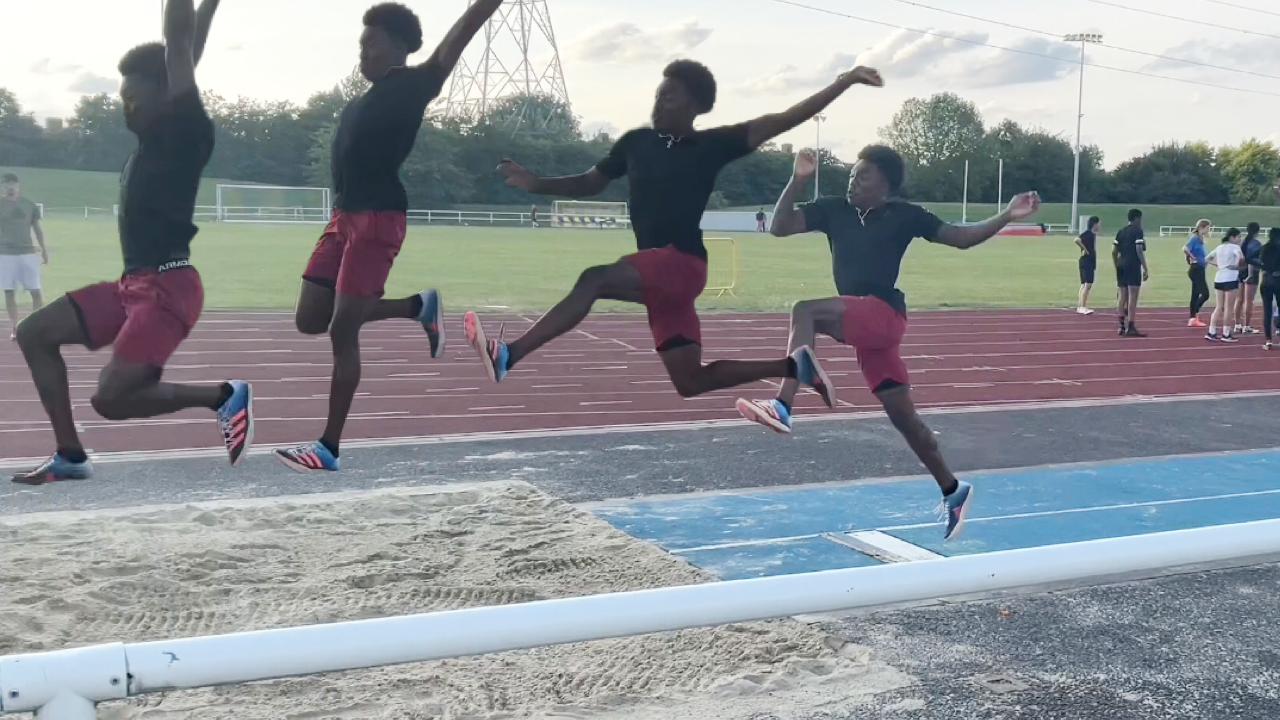
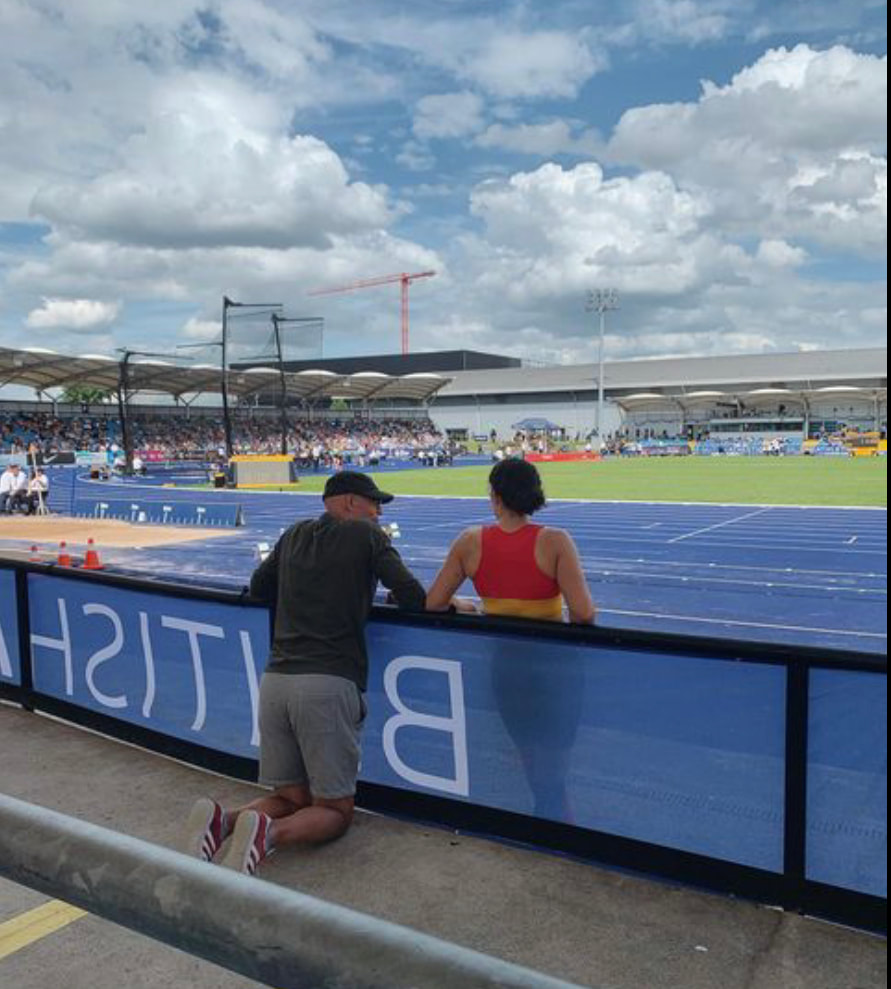
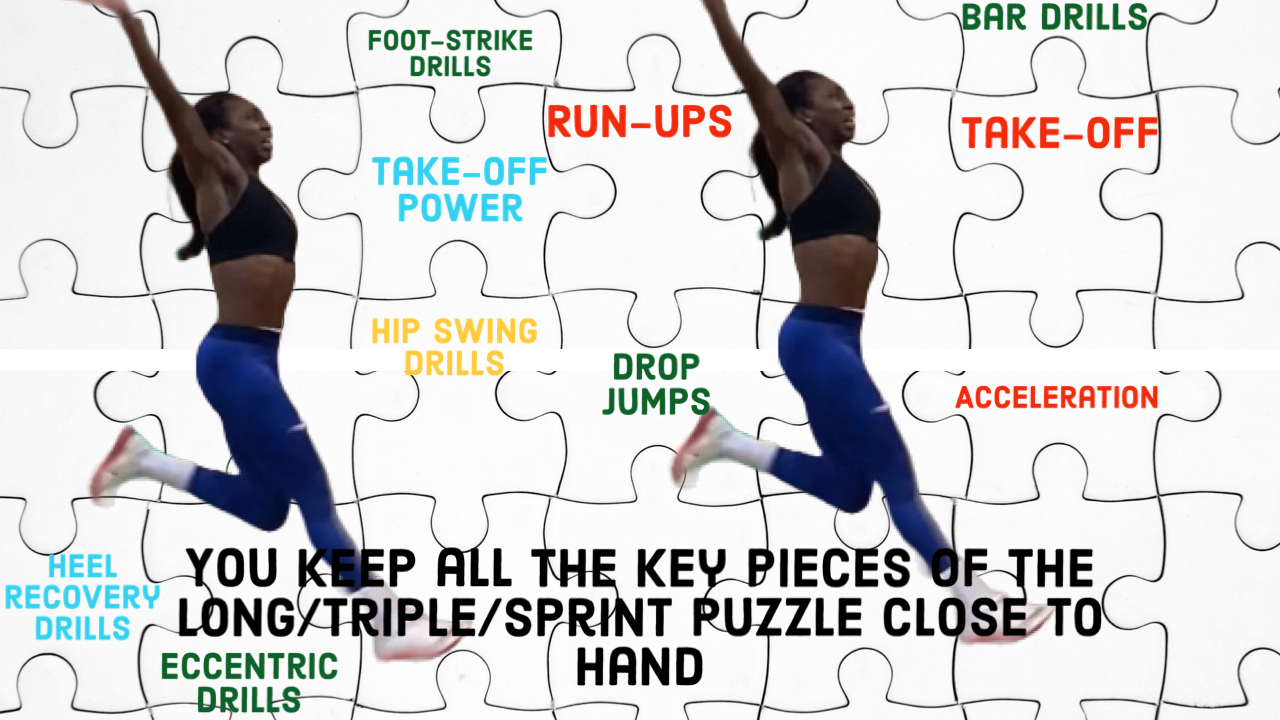
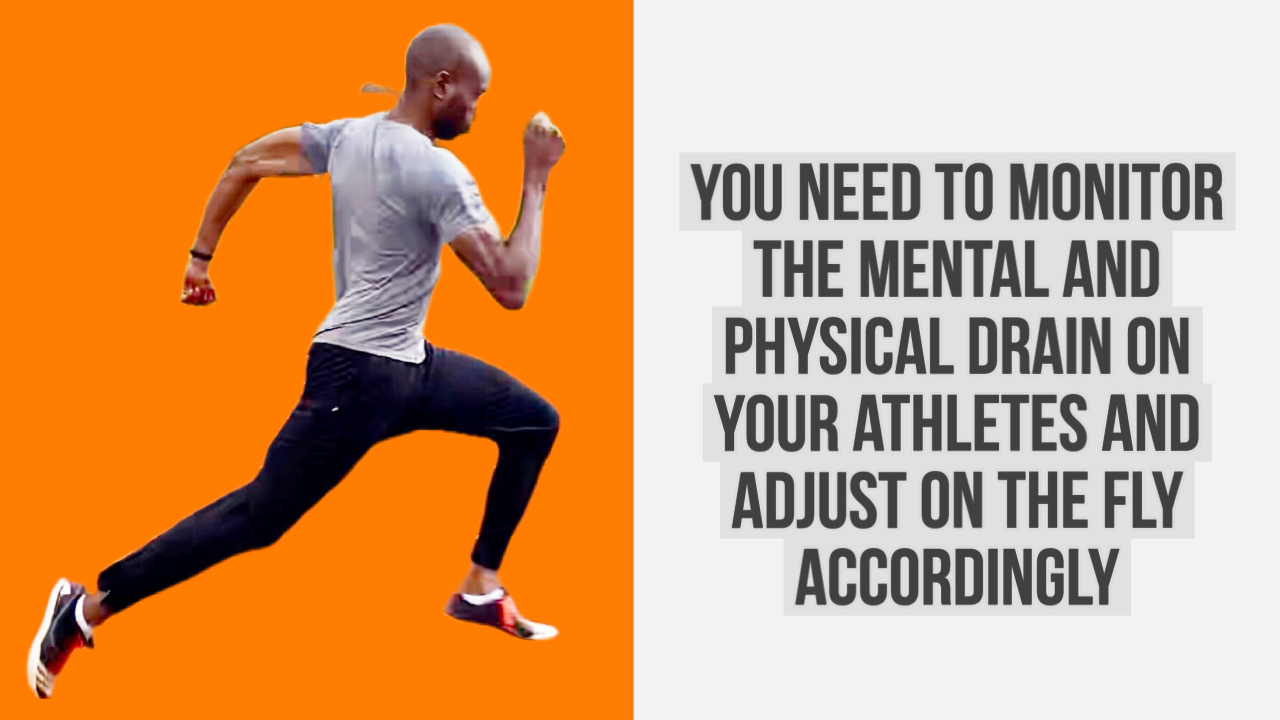
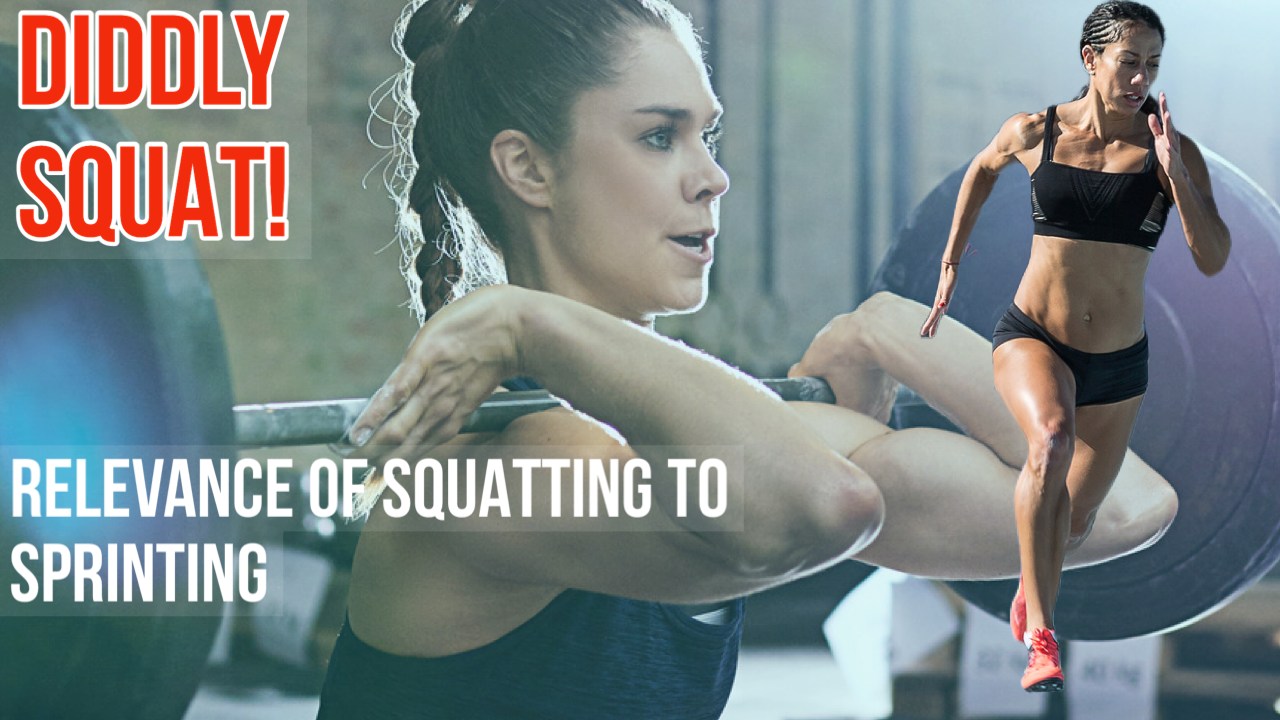

 RSS Feed
RSS Feed
